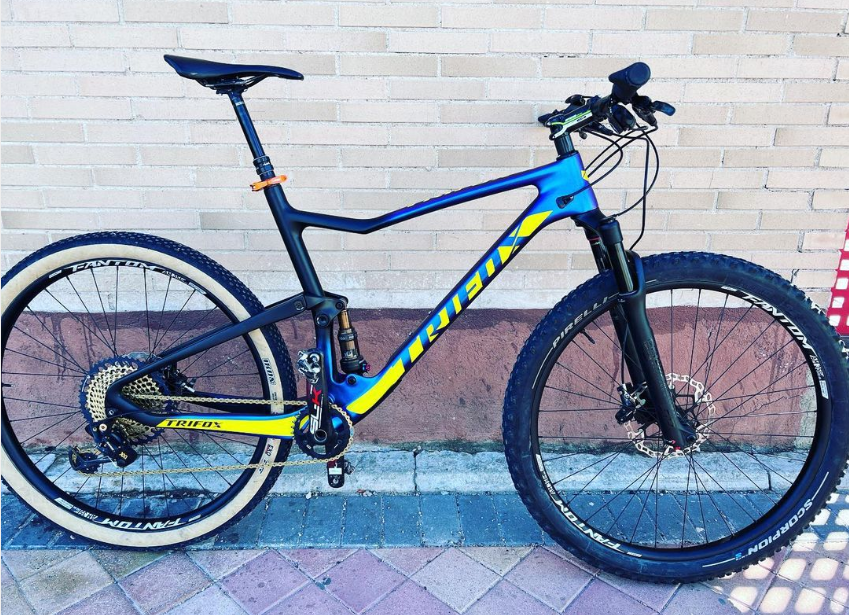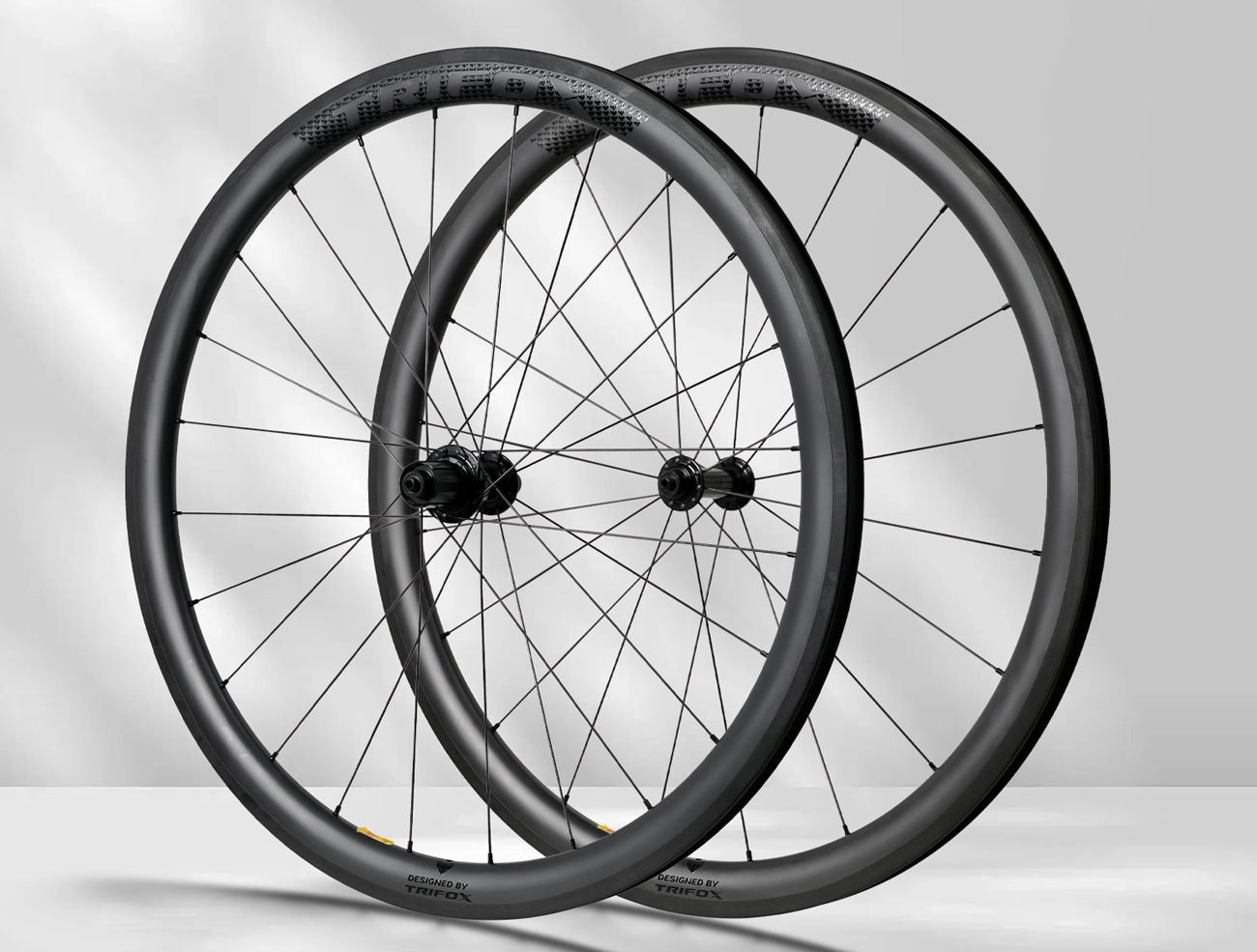6 reasons causing hydraulic brakes to rub against the disc:
1. you have to make sure your wheels are installed in place. For non-bucket axle wheels, first, confirm whether your wheels have been installed in place. Open the quick release, press the frame with your body, and then lock the quick release in place. Incorrect installation will cause the disc to tilt against the disc. For the barrel axle wheelset, before adjusting the position of the brake caliper, the barrel axle rod must be locked to a predetermined torque and then adjusted to prevent the disc position from changing after disassembling the wheelset.

2. Confirm whether there is any play in your wheel axis. Special attention should be paid to the wheelset of the ball structure. Once the bearing has a play, no matter how you adjust the position of the caliper, the disc will always be rubbed. So before adjusting the calipers, move the wheel frame to make sure that there is no play on the left and right sides of the wheel. If the bearing hub has a clearance or shaking, deep maintenance and bearing replacement are required.
3. Confirm whether the disc has large yaw. Although the discs are more or less swaying, if your bike has a disc after being transported or crashed, you’d better check whether the disc is deformed first. If the deformation is not very large, just rub the disc without being stuck, you can use the disc correction wrench to adjust. First, find the position of the deformation, use the correcting wrench to insert it along the disc support rib, and correct it in the opposite direction of the deformation. Note that you can make multiple corrections according to the situation, and avoid doing miracles with great effort.
4. Make sure that the calipers are up so that there is enough gap between the disc and the disc. This situation often occurs in brake systems that use DOT Brake Fluid oil. Because DOT Brake Fluid oil has water absorption, it will cause the gap to become smaller when the oil expands. This situation can be solved by replacing the dot oil with a new one. On the brakes that use mineral oil, it is mostly caused by excessive oil injection or excessive thickness of the disc. Depending on the situation, the piston reset wrench can be used to withstand the brake pad and discharge excess brake fluid from the oil filling port on the brake lever, thereby increasing the gap between the brake pad and the caliper. In addition, on some high-end brakes, you can slightly adjust the piston clearance by adjusting the preload of the brake lever piston.
5. Confirm that the movement of the pistons on both sides of the caliper is synchronized and that there is no immobile or sticky piston on one side.
6. Confirm the cause of the abnormal noise. Not all rubbing discs appear in the left and right positions, they may also appear in the up and down positions. Because the edges of different discs will have different textures, coupled with compatibility problems of different discs and calipers, and the fixing position of the mounting screws or the disc itself, there will be radial jumps and rubbing against the top of the calipers. The solution is simple: add a 1-2mm spacer between the frame mount or adapter and the caliper and fix it with screws again.
Method of adjusting disc brake caliper (oil pressure):
After you eliminate the above six reasons, if you still rub the disc, it will be a good solution. For hydraulic brakes, only the fixed position of the caliper needs to be adjusted. We have mentioned that the fixing screw hole of the caliper is oval and has the ability to adjust left and right. Regardless of the fixing method, including flat-mounted calipers, direct-mounted calipers, the way of installing through the adapter, the adjustment method is the same.
My most common method is to first loosen the two fixing screws so that the caliper can move freely and then tighten the caliper fixing screws while pinching the brake lever. Generally speaking, this method has a half chance of success for calipers with tapered spacers. For ordinary direct-fixed calipers, the general situation at this time is that the disc will be close to the incoming film on one side.
Next, loosen one of the fixing screws and gently loosen the other fixing screw until the caliper can rotate around it. Then adjust the position of the caliper on the side of the loosened screw, adjust it to the center, and then tighten the screw. The same method to adjust the other end. This method is relatively easy to control the adjustment range, and it is not easy to cause the caliper to shift again due to the fixing screw.
It should be noted that if the caliper is not supplied with a tapered washer, do not add it to the caliper. This aspect will cause the caliper to rise, resulting in a reduction in the contact surface and the weakening of the braking force. Another point is that some calipers will aggravate the situation that the disc is not centered.
Method of adjusting disc brake caliper (mechanical):
For mechanical disc brakes, the method is the same as that of hydraulic brakes. The difference is that the pads on both sides of the mechanical brake have a more free adjustment range.
Most of the mechanical brakes are single-piston motions, such as the MD-M300 of Yanhao TEKTRO, the position of the discs can be adjusted on both sides of the brake. The movable side can be adjusted by the tension of the brake cable, and the non-movable side can be adjusted by the fixing screw. I usually make the movable side of the film stick out less, and the inactive side to make the film stick out more. The position of the disc is closer to the movable piston side, and the left and right gap ratios are about 1:2.
If it is a bilateral piston motion mechanical brake, such as trp’s spyre. It can be adjusted according to the same left and right gap.
The angle and spacing of the brake lever
Generally speaking, the angle of the brake lever is the extension line from the arm to the handlebar to the back of the hand under the normal cycling posture, and the first joint of the brake finger is the most suitable place to put the brake lever on the brake lever. Of course, this is just a basic adjustment angle. If some cyclists have other hobbies, then comfort prevails.
Regarding the distance between the brake lever and the finger, it can be adjusted by the fine adjustment screw on the brake lever. For the more high-end brakes, the adjustment knob is directly equipped, and most of the low-end brakes need to be adjusted from the position of the brake lever and the piston link through a 2mm hexagon wrench.
The relative position of the brake lever and the fingers is to maintain the grip posture, and the first joint of the index finger is just right on the turning point of the end of the brake lever. If it is a two-finger or three-finger brake lever, the position of the outermost finger shall prevail.



















































































